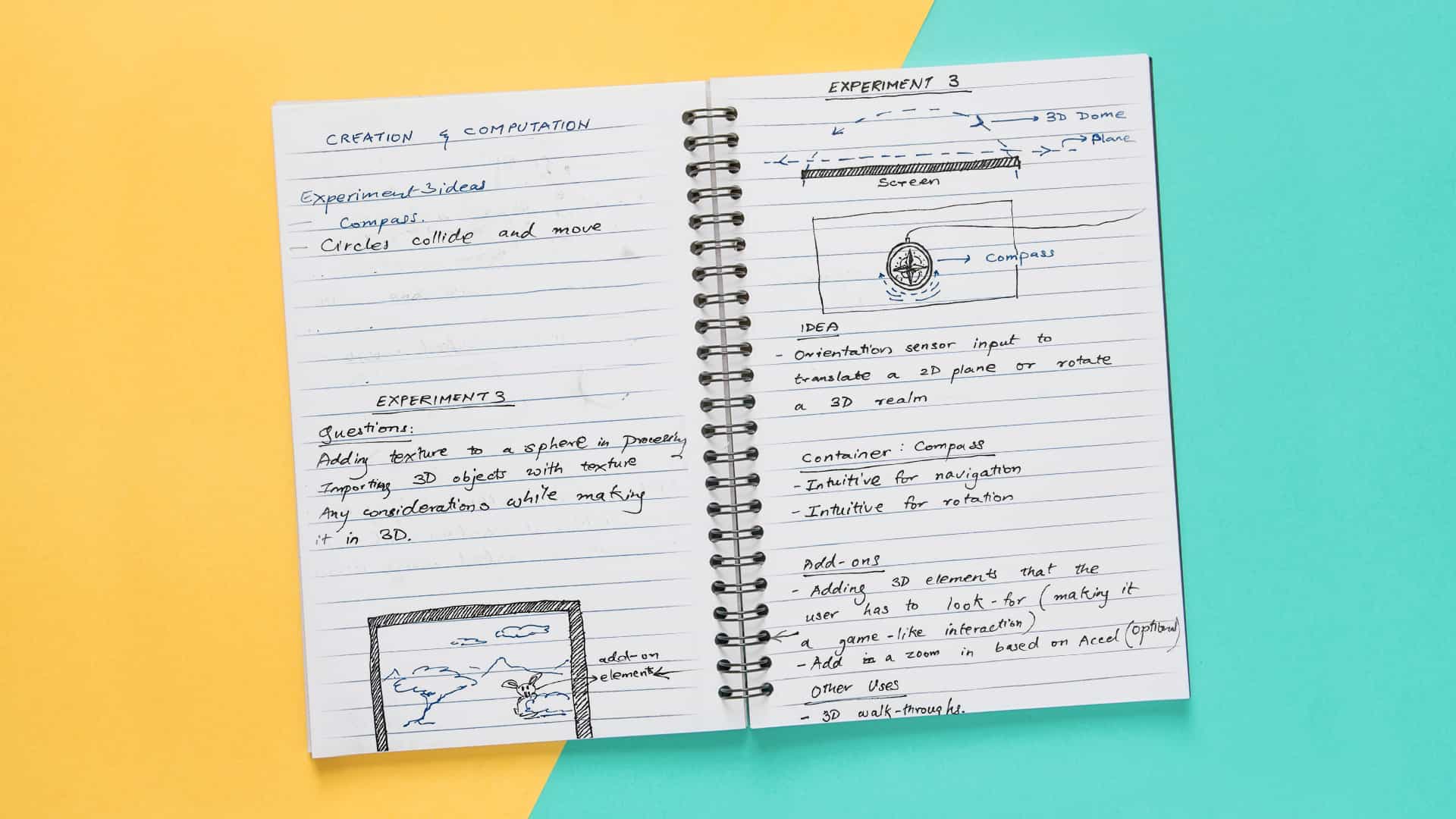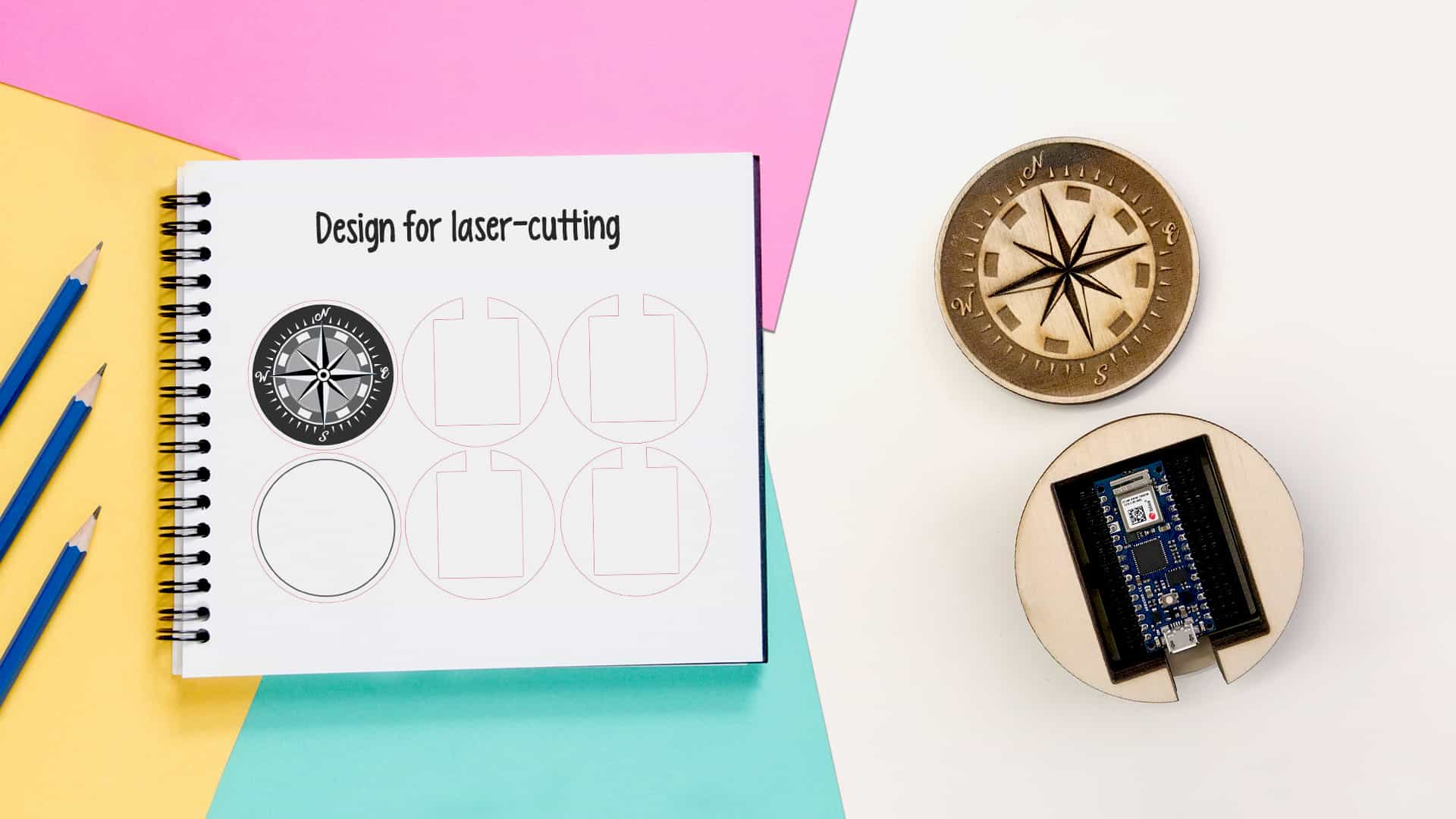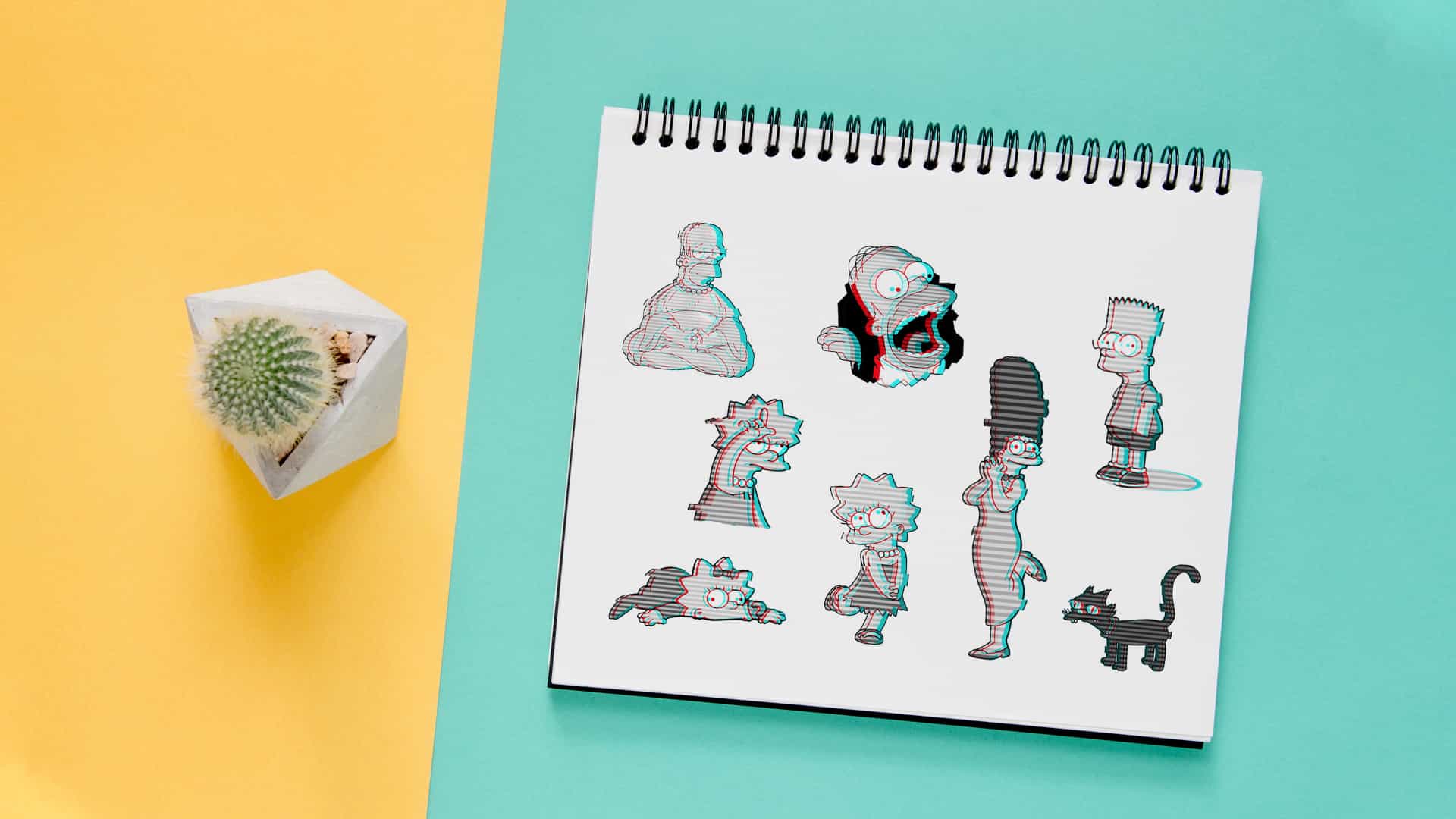How it Works
A Tangible Interface
The exploration leverages affordances of a compass such as direction, navigation, travel to intuitively steer in a virtual realm. It closely emulates a VR experience sans the VR glasses.
Participants position facing the screen and rotate the handheld compass to traverse in an environment on the screen in directions mimicking the movement of the physical interface. Participants can turn the device, or even choose to turn around with the device for subtle variation of the experience. This movement influences the 3D sphere on the screen to rotate, creating an illusion of moving in the virtual space itself. The surface of the 3D sphere is mapped with a texture of a panoramic landscape. The landscape is a stylised city scene of crossroads bundled with characters, vehicles to compliment the navigational theme of the experiment.
As a variation to the original concept, I embedded characters in the scene that participants need to search for. Thus, tapping into the ‘discovery’ affordance of the compass creating a puzzle-game experience.
The Context
Adding The Third Dimension
As a 3D digital artist, I have always been interested in exploring the possibilities of interactive 3D experiences in my practice. The introduction to processing opened doors to accessing the ‘interactive’ part of this. I was then keen on playing with the freedom and limitations of incorporating the third dimension into processing and studying its outcomes.







